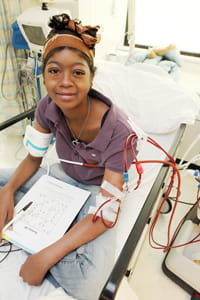Introduction to Kidney Function and Disease
Each year, only one or two children out of every 100,000 - who are 19 years old or younger - experience kidney failure. By comparison, adults are 20 times more likely to develop kidney failure than children, with the risk increasing steadily with age.
Moreover, African Americans in their late teens are three times more likely than Caucasians in the same age group to develop kidney failure, as well as diseases that damage the tiny blood vessels in the kidney. In addition, boys are nearly twice as likely as girls to develop kidney failure from birth defects, polycystic kidney disease, or other hereditary diseases.
The Dialysis Unit at Cincinnati Children’s provides information for patients and families to better understand kidney function, kidney failure and kidney diseases – both acute and chronic.




